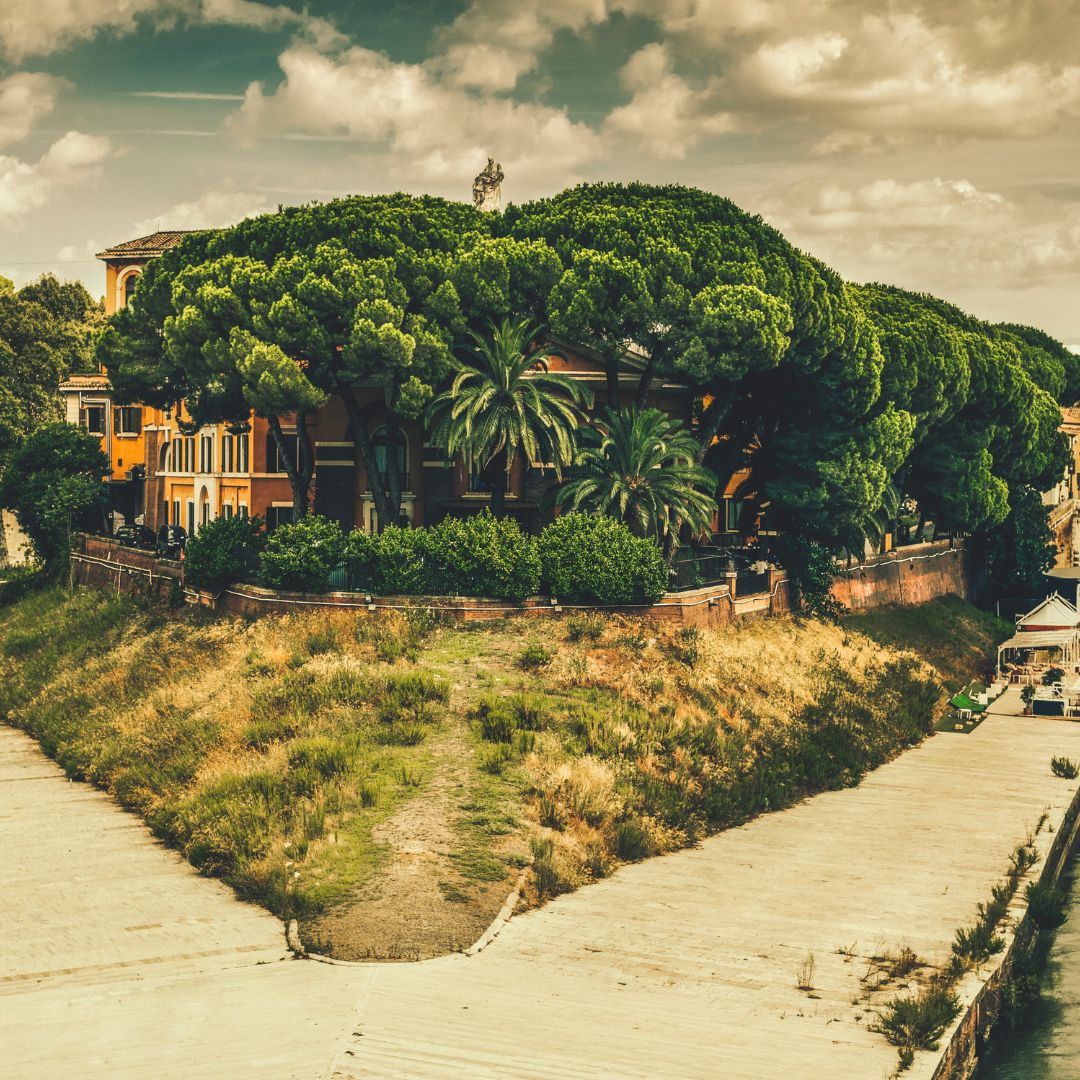Tiber Island: A Blend of Geology, History, and Modern Times
Tiber Island, a small but historically significant island nestled in the heart of Rome’s Tiber River, has captivated visitors for centuries. With its intriguing geological origins, rich history, and continuous transformation through the ages, it remains an essential destination for those exploring Rome’s ancient and modern landmarks.
The Geological Origins of Tiber Island
Formed naturally over thousands of years, Tiber Island is the only island in the Tiber River and was shaped by sediment buildup that accumulated around ancient rock formations. The island’s unique teardrop shape is a result of natural forces, contributing to its mystical and strategic allure in Roman history. Geologists suggest that the island’s formation may have been influenced by volcanic activity, with its bedrock playing a crucial role in directing the flow of the river around it.
In Roman legend, however, the island’s origins are said to be linked to the overthrow of the tyrannical king Tarquinius Superbus in 509 B.C. His body was allegedly thrown into the Tiber, causing sediment to gather around it, eventually forming what would become Tiber Island.
Historical Significance: From Healing Temples to Fortresses
Throughout Roman history, Tiber Island has been closely associated with healing and sanctuary. In 293 B.C., during a plague in Rome, the island became a site of worship dedicated to Asclepius, the Greek god of medicine. A temple was constructed after a sacred snake, representing the deity, was brought from the city of Epidaurus in Greece. This event led to the island being seen as a place of healing and transformation.
The island’s role evolved over time, particularly during the Middle Ages when it became a key fortification and was later connected to the mainland by two important bridges: Ponte Fabricio, the oldest Roman bridge still in use today, and Ponte Cestio, linking the island to the Trastevere district. These bridges allowed the island to serve as a critical crossing point and refuge for travelers and merchants in ancient Rome.
The Transformation of Tiber Island Through the Centuries
As Rome transformed, so did Tiber Island. During the Renaissance, the island continued to be a central point of commerce, with its hospitals gaining prominence. In fact, Tiber Island’s association with healing still endures today, with the Fatebenefratelli Hospital, established in the 16th century, standing as a modern institution on the island, continuing the island’s legacy as a place of healing.
In the 19th century, Tiber Island underwent significant changes, with new construction projects aimed at controlling the river’s floodwaters. These interventions further solidified the island’s status as a key part of Rome’s urban landscape.
Tiber Island in Modern Times
Today, Tiber Island remains a must-visit destination for tourists and pilgrims alike. The island’s compact size belies its historical and cultural significance. Visitors can stroll along the island’s pathways, visit the Basilica of St. Bartholomew, and admire remnants of the ancient Temple of Asclepius.
A highlight of modern Tiber Island is its integration into the Rome Film Festival and various cultural events, which use the island as a scenic venue during summer. Its central location makes it an ideal stop for those exploring Rome, offering a tranquil retreat amidst the bustling city.
A Destination for Guided and Private Tours in Rome
For those seeking to explore the island’s history, geology, and cultural significance, guided tours of Tiber Island offer an immersive experience. These tours often include a deep dive into the island’s role during ancient times, visits to its architectural landmarks, and stories of the myths that surround it.
Private tours allow for a more intimate experience, perfect for travelers looking to delve into the island’s hidden corners and lesser-known historical details. Whether you’re interested in Roman mythology, medieval history, or modern urban transformation, a tour of Tiber Island provides a unique perspective on Rome’s evolution.
A Timeless Icon of Rome
Tiber Island stands as a testament to Rome’s enduring ability to blend its ancient past with the present. From its geological beginnings to its role as a healing sanctuary, and from medieval fortresses to modern-day cultural events, the island continues to play a vital role in the life of the Eternal City. For visitors eager to explore Rome’s rich history and natural beauty, Tiber Island offers a unique, unforgettable experience.
Book a Guided to discover the hidden gems of Tiber Island and experience Rome’s historical treasures up close.

